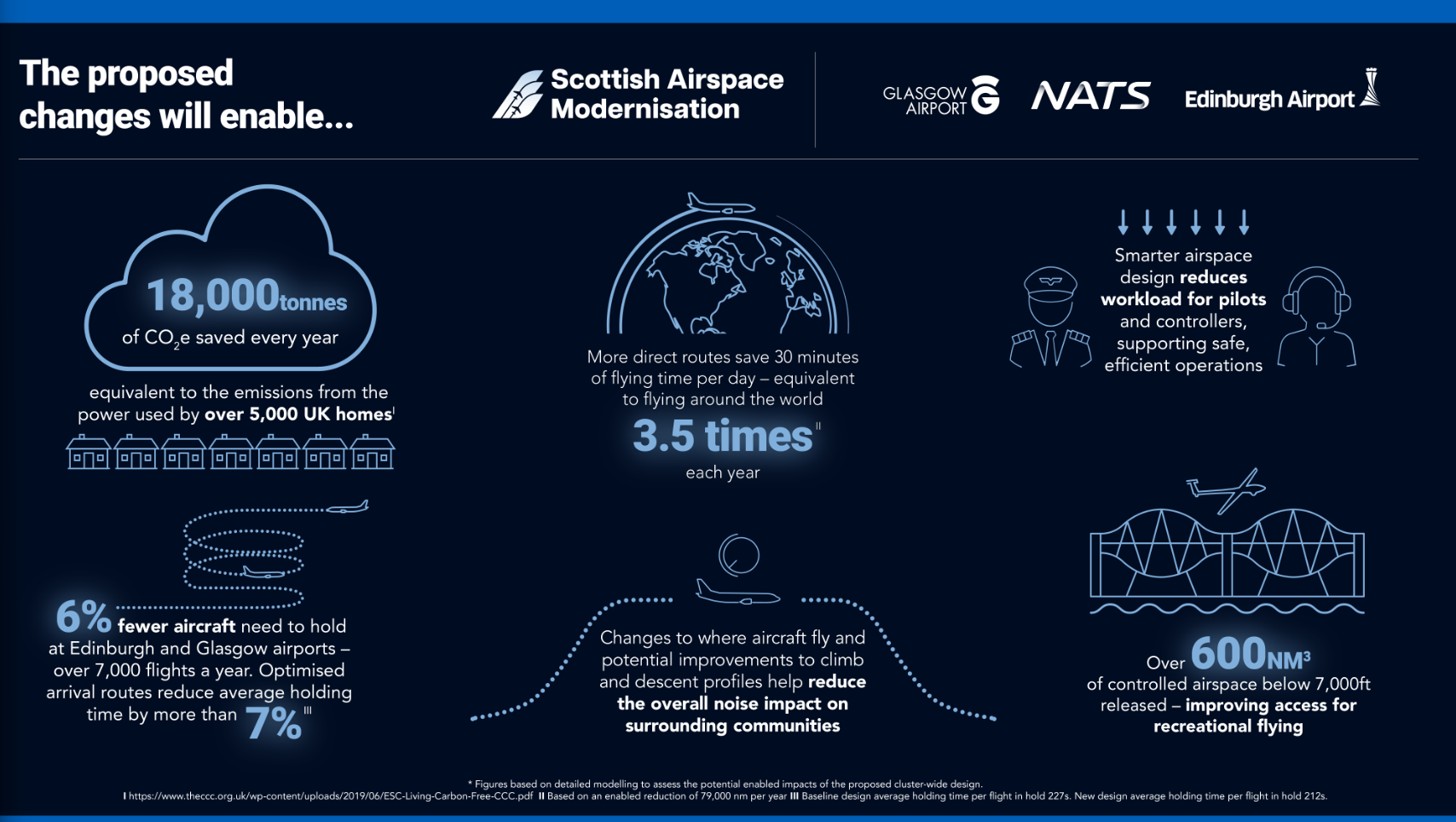A major consultation has opened to gather views on plans to modernise Scotland’s airspace and transform the way aircraft travel in and out of Glasgow and Edinburgh Airports.
The Scottish Airspace Modernisation consultation began on 20th October 2025, giving communities, political representatives and stakeholders the chance to comment on the proposed redesign.
The project is a joint effort between Glasgow Airport, Edinburgh Airport, and NATS, which manages air traffic control across the UK. Together, they are proposing a coordinated change to the routes aircraft use at different altitudes – with the goal of making flights more efficient, reducing emissions, and cutting down on noise.
Glasgow and Edinburgh Airports are responsible for redesigning departure and arrival routes below 7,000ft, while NATS is managing changes to the higher-level airspace above. The plans form part of the Civil Aviation Authority’s Airspace Modernisation Strategy, which aims to make UK airspace “quicker, quieter and cleaner”.
Keir Mather, Minister for Aviation, Maritime and Decarbonisation, said: “We are fast-tracking airspace modernisation to deliver more reliable, efficient, and greener flights, while giving passengers greater choice and a better experience. It is fantastic to see Scottish airports and NATS reach this important milestone.”
The proposed changes cover around 61,000 square kilometres of Scottish airspace that handles more than 200,000 flights a year. Modernising these routes could reduce annual carbon emissions by 18,000 tonnes of CO₂e, the equivalent of the energy used by about 5,000 homes.
The updates would also make flights more direct, cutting around 79,000 nautical miles of flying each year – roughly equal to travelling around the world three and a half times.
Much of the UK’s current airspace layout dates back to the 1950s, when there were fewer flights and technology was less advanced. Modern aircraft still follow many of these outdated routes, meaning they often fly longer distances than necessary.
Under the new plans, continuous climb and descent procedures would be introduced below 7,000ft, helping to reduce fuel burn, emissions, and noise for nearby communities. Between 7,000ft and 25,500ft, NATS plans to create more structured flight paths – known as “systemisation” – to make airspace more efficient and improve capacity for future demand.
Mark Beveridge, Managing Director of Glasgow Airport, said: “Our proposals aim to reduce the total adverse effects of noise from aircraft, improve capacity and minimise delays, and lower emissions per flight through more direct routing. We look forward to engaging in detailed discussions at our upcoming events and webinars.”
Lee Boulton, Head of Operations Development at NATS, added: “Scottish airspace is among the busiest in the UK, handling over 40% of UK traffic. With demand expected to rise over the next decade, airspace modernisation will help ensure the network can meet future needs by enabling more direct routes while reducing emissions per flight.”
Gordon Dewar, Chief Executive of Edinburgh Airport, said the consultation would continue discussions with local communities to explain the potential environmental and operational benefits.
Mark Swan, Head of the Airspace Change Organising Group (ACOG), added that Scotland was leading the way in the UK’s national airspace upgrade:
“This consultation marks a significant milestone in the national programme of airspace change, with Scotland at the vanguard. Upgrades will enhance the efficiency of this infrastructure, reduce passenger delays, lower emissions per flight, and prepare for future growth.”
Public engagement sessions, webinars, and drop-in events will be held across Scotland during the consultation period, giving residents the chance to learn more and provide feedback directly to project representatives.
The consultation is open until 11.59pm on 25th January 2026.
For full details and to share your views, visit www.scottishairspacemodernisation.co.uk.

